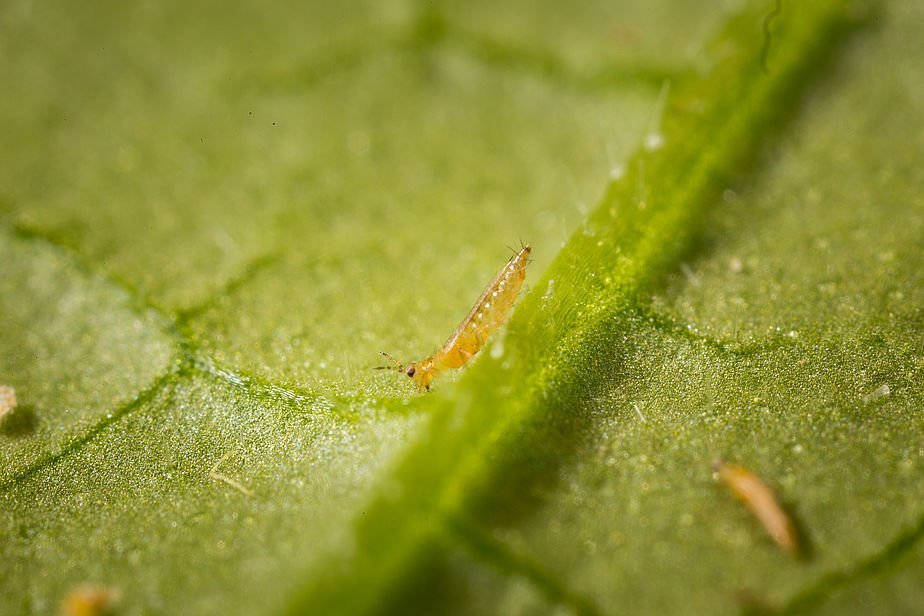Western flower thrips (WFT) are a pest of protected plants causing damage directly through feeding and indirectly through the transmission of plant viruses. Thrips are difficult to control because of their high reproductive rate, cryptic habit (larvae hide in closed buds and pupate in soil) and resistance to many insecticides. In addition to chemical insecticides, a range of biological agents are available for thrips control including arthropod predators and parasitoids, and insect pathogenic nematodes and fungi. Whereas most attention has focused on the control of adults and larvae in the crop canopy little effort has been made to interrupt the life cycle by controlling the pupae.

Both BVW and WFT spend part of their life cycle in growing media. Control of these subterranean stages would contribute significantly to the overall integrated pest management programme (IPM).
The overall aim of this project was to develop the V275 strain of the entomogenous fungus M. anisopliae for the control of BVW larvae and WFT pupae in plant growing media. It offers a benign alternative to chemical pesticides that are currently under threat of being phased out (e.g. chlorpyriphos) or where pests have developed resistance (WFT is resistant to many pesticides e.g. chlorpyriphos) or likely to develop resistance soon because of extensive use (e.g. imidacloprid).
Earlier studies by Helyer et al (1995) showed that fungal BCAs applied to peat-based composts was effective in killing WFT pupae and helped reduce thrips populations. In light of the studies conducted against BVW, we initiated these studies with the following objectives: i) to determine the efficacy of M. anisopliae against WFT pupae in disparate horticultural growth media, ii) to explore synergistic interactions between sublethal doses of chemical insecticides (fipronil and imidacloprid) and M. anisopliae against WFT pupae, iii) to compare M. anisopliae application method on its efficacy against WFT pupae.
Findings:
- M. anisopliae is very effective in controlling WFT pupae. It reduced WFT adult emergence by 80- 90% as compared to 40% reduction provided by chemical insecticides.
- Percolation of M. anisopliae inoculum through plant growth media depends upon its application method. Very little inoculum was lost if conidia had been premixed into the growing medium before potting, however, drench application could cause up to 90% loss of inoculum. It was observed that the majority of inoculum percolated at the time of drench application; therefore, the volume of drench application should be optimised to avoid any runoff from pot during application.
- Plant growth media had no adverse effect on M. anisopliae efficacy.
Other benefits:
- M. anisopliae is far superior to chemical pesticides for controlling thrips pupae, thus contributing significantly to IPM programmes for thrips control.
- There are few or no concerns with disposal of spent media because M. anisopliae has no environmental risk (unlike chemical pesticides which may leach into groundwater).
- M. anisopliae (± entomopathogenic nematodes) will benefit organic growers in many sectors of horticulture (i.e. soft fruit, indoor ornamentals, hardy nursery stock) where BVW and thrips are major pests.
- We have shown that some chemical pesticides can be used at lower than recommended rates (e.g. Vi-nil can control BVW at 1/10th of the recommended rate), thus saving growers money and concomitantly reducing pesticide inputs.
